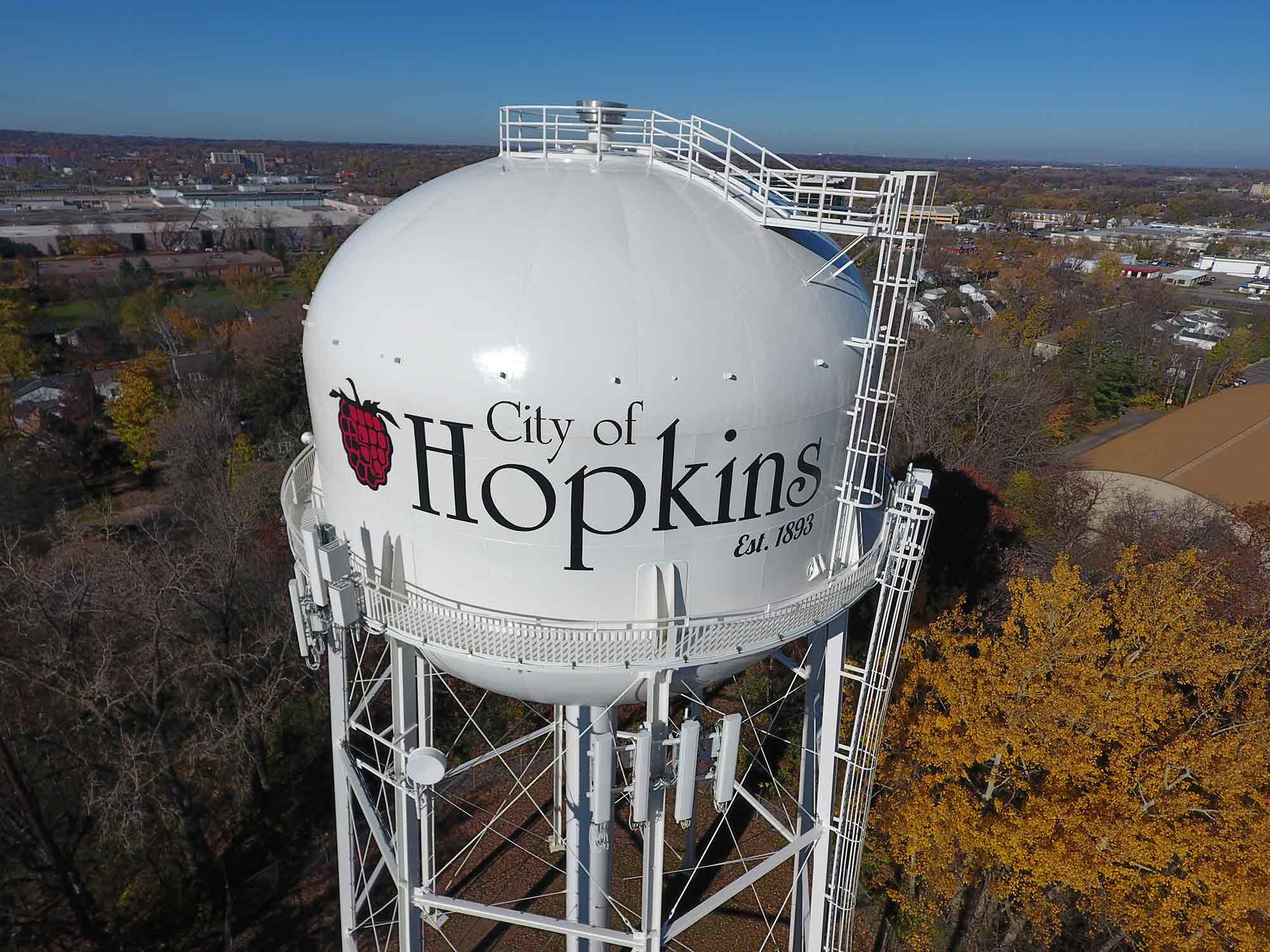Hopkins Water Softener and Drinking Water Guide

Occasionally water turns brown when hydrant flushing, water main breaks, or service leaks cause iron buildup in the water mains to dislodge and release this iron back into the tap water.
- Soft Water
- National Hardness Average
- Hopkins Water Hardness
Hopkins Water Softener Recommendations
The national average for water hardness is 5gpg (grains per gallon). Hopkins water hardness ranges from 18-20gpg, which is almost 4x harder than average.
A water softener will protect your water heater, plumbing, and appliances from hard water damage. A high efficiency water softener will offer the same protection, but will use far less water and salt.
Need the Right Water Softener or Filter for Your Home in Hopkins, MN?
Contact us for a FREE water test and site inspection. We’ll get you a FREE quote to help you get the water quality you want.
Hopkins Water Reports
The City of Hopkins does regular water testing and publishes the results in Annual Drinking Water Reports. These reports explain which water contaminants, and what levels have been found.
2019 Hopkins – ELEVATED COPPER LEVELS – special report
2018 Hopkins, MN Water Report
2017 Hopkins, MN Water Report
2016 Hopkins, MN Water Report
2015 Hopkins, MN Water Report
2014 Hopkins Water Report
2013 Hopkins Water Report
2012 Hopkins Water Report
2011 Hopkins Water Report
2010 Hopkins Water Report
2009 Hopkins Water Report
MCL: Maximum Contaminant Level
The legal limit for a certain contaminant
MCLG: Maximum Contaminant Level GOAL
The level with ZERO HEALTH RISKS, aka the “Health Limit”
All water contaminants meet the EPA’s “Legal Limit”. Contaminants that exceed the EPA’s Health Limit have been highlighted below.
Inorganic Contaminants
Inorganic contaminants include natural and manmade salts and metals. You are mostly exposed to inorganics through drinking water, most do not easily pass through skin. Carbon Filters (refrigerator and faucet filters) have almost ZERO impact on these contaminants. Reverse Osmosis very effective at removing inorganic contaminants.
| Contaminant | Amount Found | Health Limit | Legal Limit | Potential Effects |
|---|---|---|---|---|
| Arsenic | 1.48 | 0 | 10 | Skin damage or problems w/ circulatory systems, increased risk of cancer |
| Barium | 0.16 | 2 | 2 | Increase in blood pressure |
| Fluoride | 1.0-1.6 | 4 | 4 | Bone disease;children may get mottled teeth |
| Nitrate | 0.15-0.34 | 10 | 10 | Blue-baby syndrome |
Organic Contaminants
Organic contaminants can come from either natural sources like algae, or man-made chemicals. You can be exposed through drinking water, absorption through skin (bathing), and inhalation. This makes a Hybrid Filter System, or Whole House Carbon Filter a good preventative tool.
| Contaminant | Amount Found | Health Limit | Legal Limit | Potential Effects |
|---|---|---|---|---|
| cis-1, 2-Dichloroethylene | 0.3-1.5 | 70 | 70 | Liver problems |
| Toluene | 0.2-0.4 | 100 | 100 | Nervous system, liver, or kidney problems |
| trans-1,2-Dichloroethylene | 0.15-0.30 | 100 | 100 | Liver problems |
Disinfectants and Disinfection Byproducts
Disinfectants are added to kill bacteria. Disinfectants like Chlorine react with other chemicals and create “Disinfection Byproducts. These chemicals enter the body through inhalation, absorption through skin, and drinking water. A Whole House Carbon Filter is a good preventative tool in addition to a Drinking Water System for these compounds.
| Contaminant | Amount Found | Health Limit | Legal Limit | Potential Effects |
|---|---|---|---|---|
| Chlorine | 0.2-1.7 | 4 | 4 | Eye/nose irritation; stomach discomfort |
| Chloroform | 0.78-1.0 | 5.7 | 80 | Nervous system depression, increase in kidney and liver tumors |
| Haloacetic Acids | 0.7-2.0 | 0 | 80 | Increased risk of cancer |
| Total Trihalomethanes | 0.5-1.5 | 0 | 60 | Increased risk of cancer |
Radionuclide Contaminants
Radionuclides in water may occur naturally, or come from oil and gas production or mining activities. These can be inhaled, or consumed through drinking water.
| Contaminant | Amount Found | Health Limit | Legal Limit | Potential Effects |
|---|---|---|---|---|
| Alpha Emitter | 5.3-8.1 | 0 | 15.4 | Increased risk of cancer |
| Combined Radium | 1.4-2.6 | 0 | 5 | Increased risk of cancer |
| Radon | 133 | 0 | NA | Increased risk of cancer |
